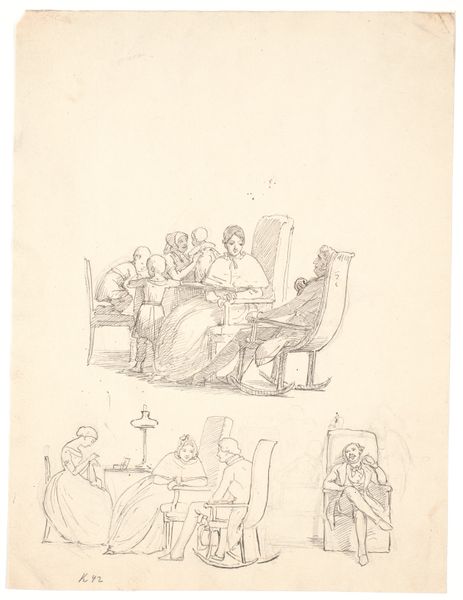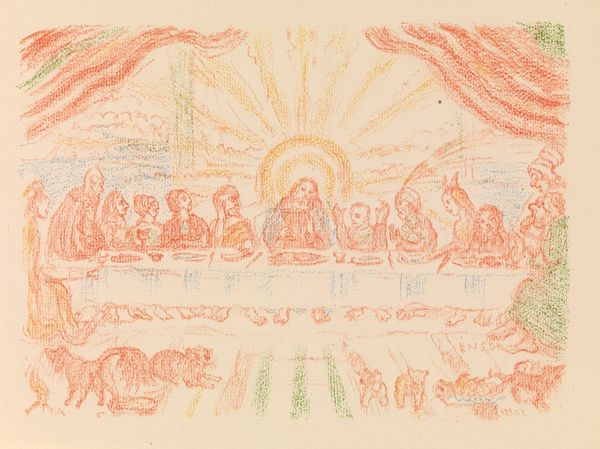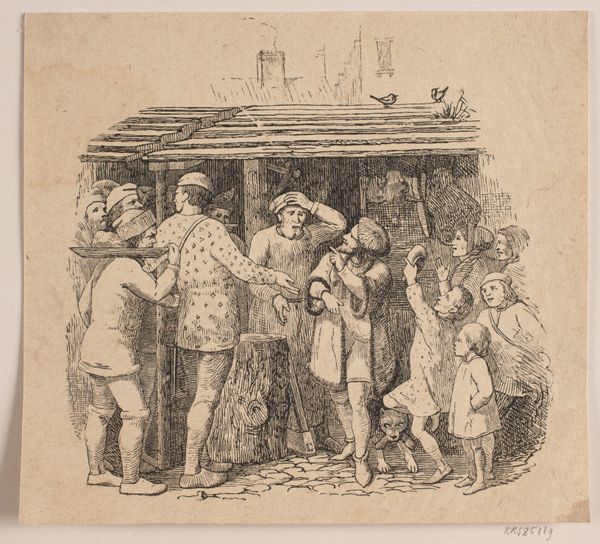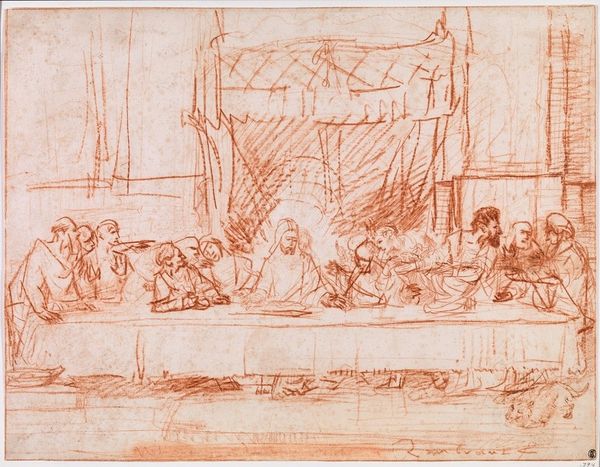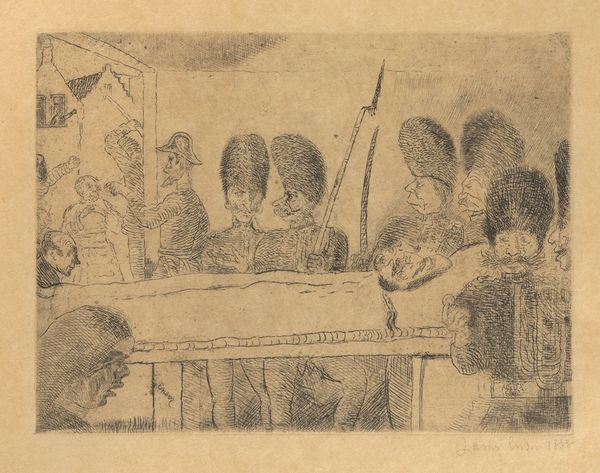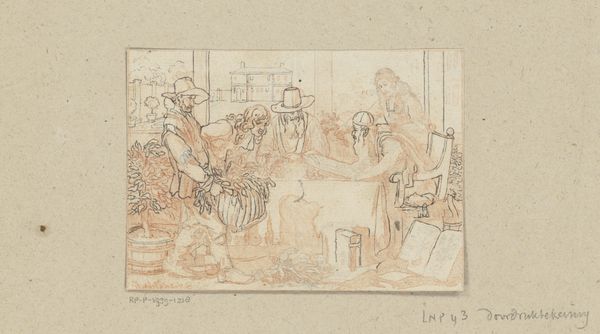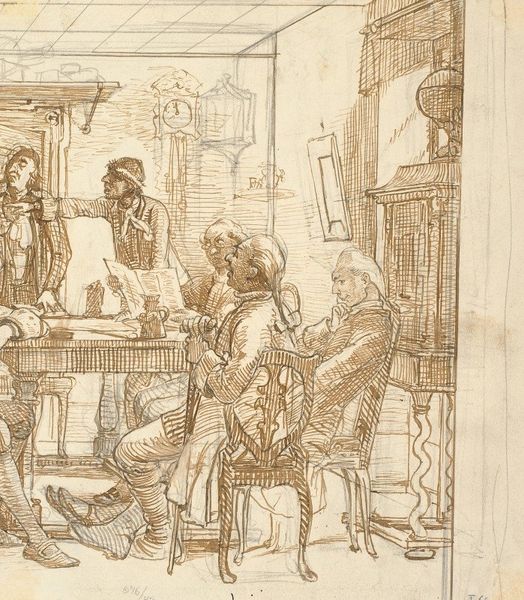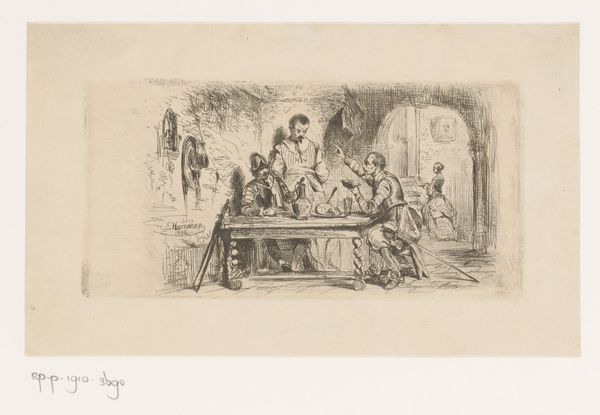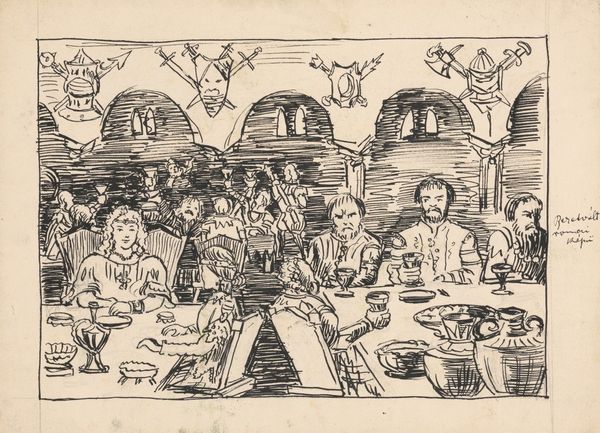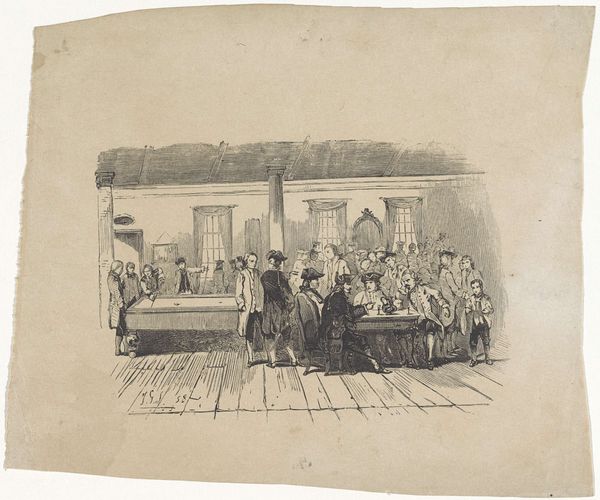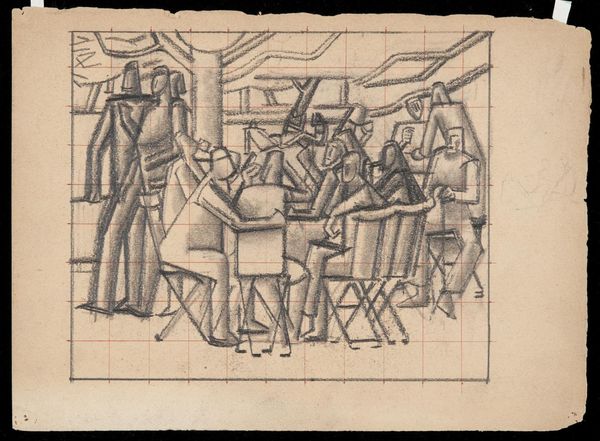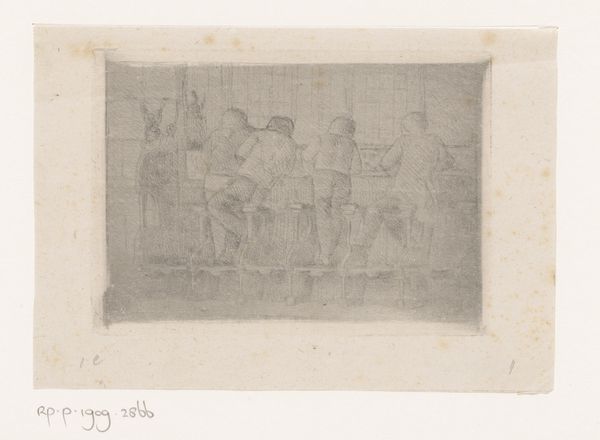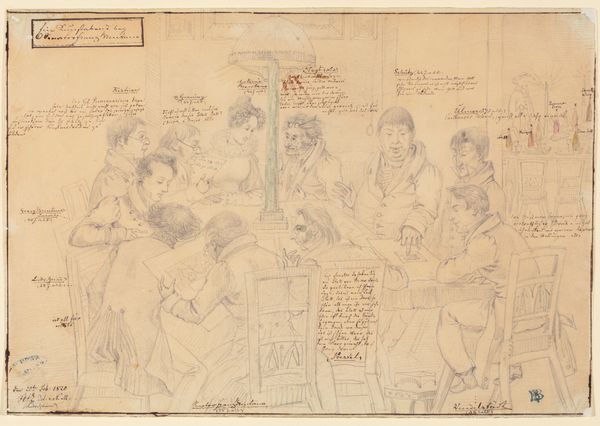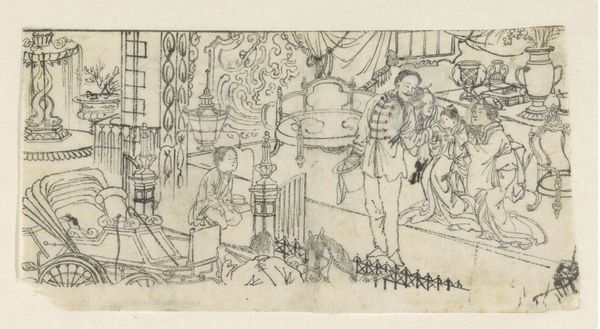
Tidligt udkast til Valdemar Sejr og festmåltidet på Lyø 1930
0:00
0:00
drawing, coloured-pencil, pencil
#
drawing
#
coloured-pencil
#
narrative-art
#
pencil
#
history-painting
#
academic-art
Dimensions: 188 mm (height) x 259 mm (width) (bladmaal)
Curator: Looking at this piece, I’m struck by its quiet grandeur. This is Agnes Slott-Møller's "Early Draft for Valdemar Sejr and the Feast at Lyø," dating back to 1930. It’s a pencil and coloured pencil drawing. Editor: Well, “quiet” is right. It feels like a stage set before the actors arrive, or after they've left, leaving the remnants of their drama behind. It looks very muted—very sketch-like—in both colour and concept. Curator: Precisely, it’s the undercurrent of anticipation—or perhaps recollection—that I find captivating. Slott-Møller seems to tap into something more significant. We see the remnants of that famed feast – the vessels and textiles...but something about it feels unsettling. Editor: Well, what is it that those items would tell us? The tapestry hung on the back wall suggests considerable skill; someone labored to produce that and someone valued the work...I imagine these objects played an important role in how history remembers those events, they certainly point to a wealthy ruling class. But yeah, unsettling. Curator: It is interesting, isn't it? The work deals with ideas of Danish identity, history, and nationhood in ways that seem open for interpretation, and here, it is presented with restraint. Editor: But consider also, that draftsmanship. It has a ghostly, ephemeral quality because of its “unfinished” nature. Like labor in the fields, it reminds me of the temporary and physical nature of everything. Perhaps the final piece was about nationhood and triumph, but this piece holds within it all that undergirds and is then obscured by these grand pronouncements. Curator: It gives one pause, doesn't it? The drawing almost invites us to co-create, to imagine filling in those blanks in Danish history – to actively join in imagining it. Editor: Absolutely, and with those rough strokes, the labour in it. Slott-Møller is beckoning to consider the many histories written *within* History. It almost reminds me, too, of modern art's desire to pull back the veil to the literal construction of its making. It refuses completion and stands instead as an almost archaeological remnant of creative production. Curator: Exactly. I will view finished works differently from now on! Editor: As will I; you have no idea what I have previously missed by looking past unfinished works!
Comments
No comments
Be the first to comment and join the conversation on the ultimate creative platform.
